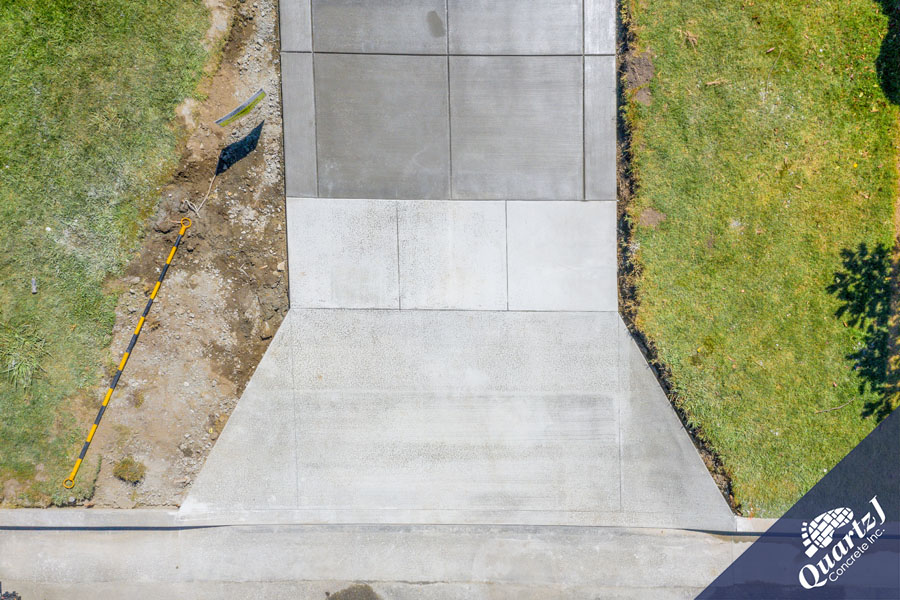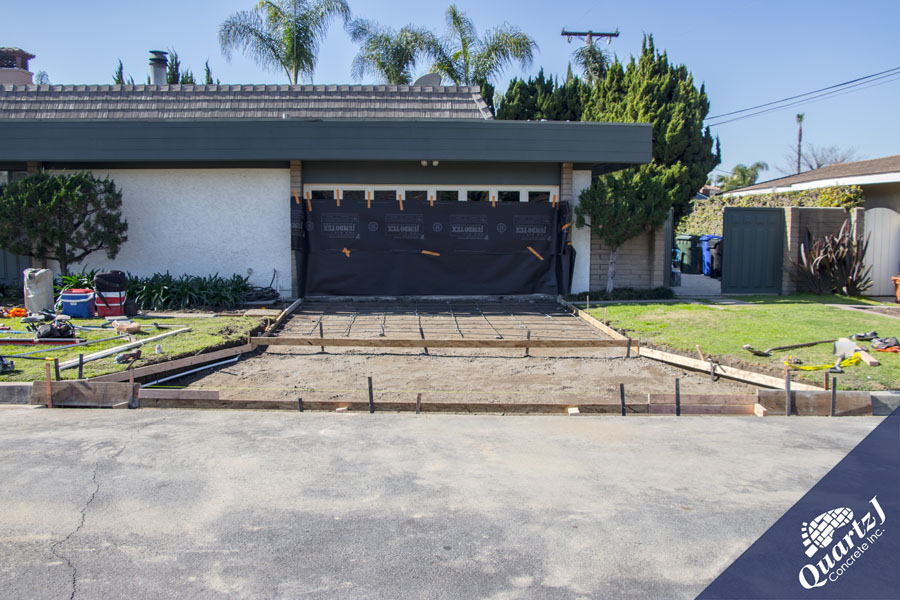Concrete Approaches and Sidewalks
A Guide with FAQs for you.
No Shortcuts
Concrete approaches and sidewalks provide a durable and safe surface for pedestrians to walk on, making them a popular choice for homes, businesses, and public spaces. Here’s a guide to help you understand concrete approaches and sidewalks, including common questions and answers.
What is a Concrete Approach?
A concrete approach is a sloping section of concrete that connects a road or driveway to the sidewalk. It provides a smooth transition between the two surfaces, making it easier for vehicles and pedestrians to access the sidewalk.


What is a Sidewalk?
A sidewalk is a pathway designed for pedestrians. It is usually made of concrete and runs along the side of a road, providing a safe and convenient way for people to walk.
Benefits of concrete approaches and sidewalks?
Safe
Sidewalks provide a dedicated space for pedestrians, keeping them separate from vehicles and reducing the risk of accidents.
Durable:
Concrete is a strong and long-lasting material that can withstand heavy foot traffic and weather conditions.
.
Accessible
Sidewalks are level and smooth, making them accessible for people with mobility issues, including those using wheelchairs and strollers.
Aesthetic
Concrete approaches and sidewalks can be designed to complement the style of your home or business, adding visual appeal to the surrounding area.


What are the different styles of concrete approaches and sidewalks?
- Plain concrete: A simple and cost-effective option that is ideal for areas with low foot traffic.
- Stamped concrete: A decorative option that mimics the look of natural stone, brick, or other materials.
- Colored concrete: Concrete that is colored to match the surrounding area or to add a pop of color to the space.
- Exposed aggregate: A decorative option that exposes the aggregate (gravel or stone) in the concrete, creating a unique texture and look.
What factors affect the cost of concrete approaches and sidewalks?
- Size: The larger the area, the more expensive it will be to install concrete approaches and sidewalks.
- Design: Decorative options like stamped concrete, colored concrete, and exposed aggregate will increase the cost of the project.
- Location: The cost of materials and labor will vary depending on your location.
- Accessibility: Installing sidewalks that are compliant with accessibility standards may require additional work, adding to the cost of the project.


What is the process for installing concrete approaches and sidewalks?
- Preparation: The area will be cleared of any existing debris or vegetation, and the ground will be leveled and compacted.
- Forms: Wooden forms will be installed to outline the shape of the concrete approach and sidewalk.
- Rebar: Steel rebar will be placed in the forms to reinforce the concrete.
- Concrete pour: The concrete will be mixed and poured into the forms, and it will be smoothed and leveled.
- Finishing: The concrete will be allowed to cure for a specified period of time, and then any excess concrete will be trimmed away. The surface may be stamped, colored, or treated with an exposed aggregate finish, if desired.
How do I maintain my concrete approaches and sidewalks?
- Cleaning: Regular cleaning of your concrete approaches and sidewalks will help to maintain their appearance.
- Sealing: Applying a concrete sealer will protect the surface from staining and weather damage.
- Repair: Any cracks or chips in the concrete should be repaired as soon as possible to prevent further damage.


In conclusion, concrete approaches and sidewalks are a practical and attractive solution for providing a safe and accessible pathway for pedestrians. Whether you’re installing












